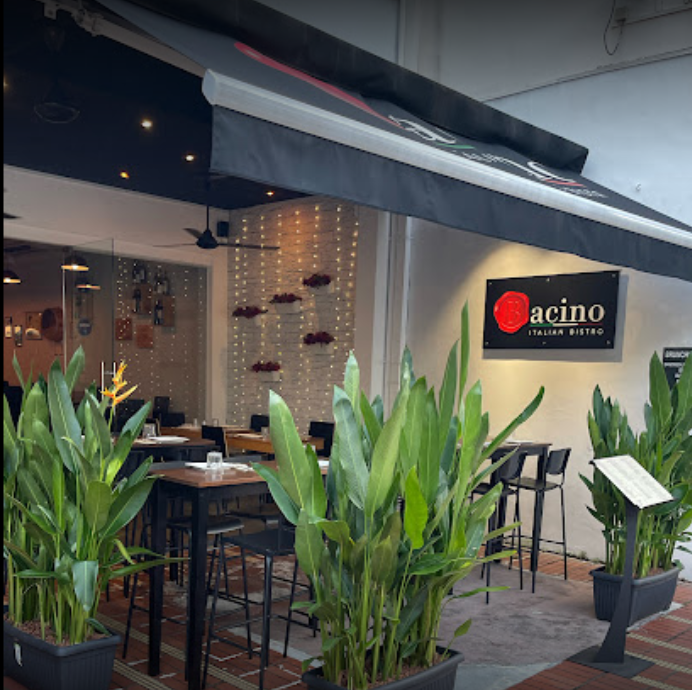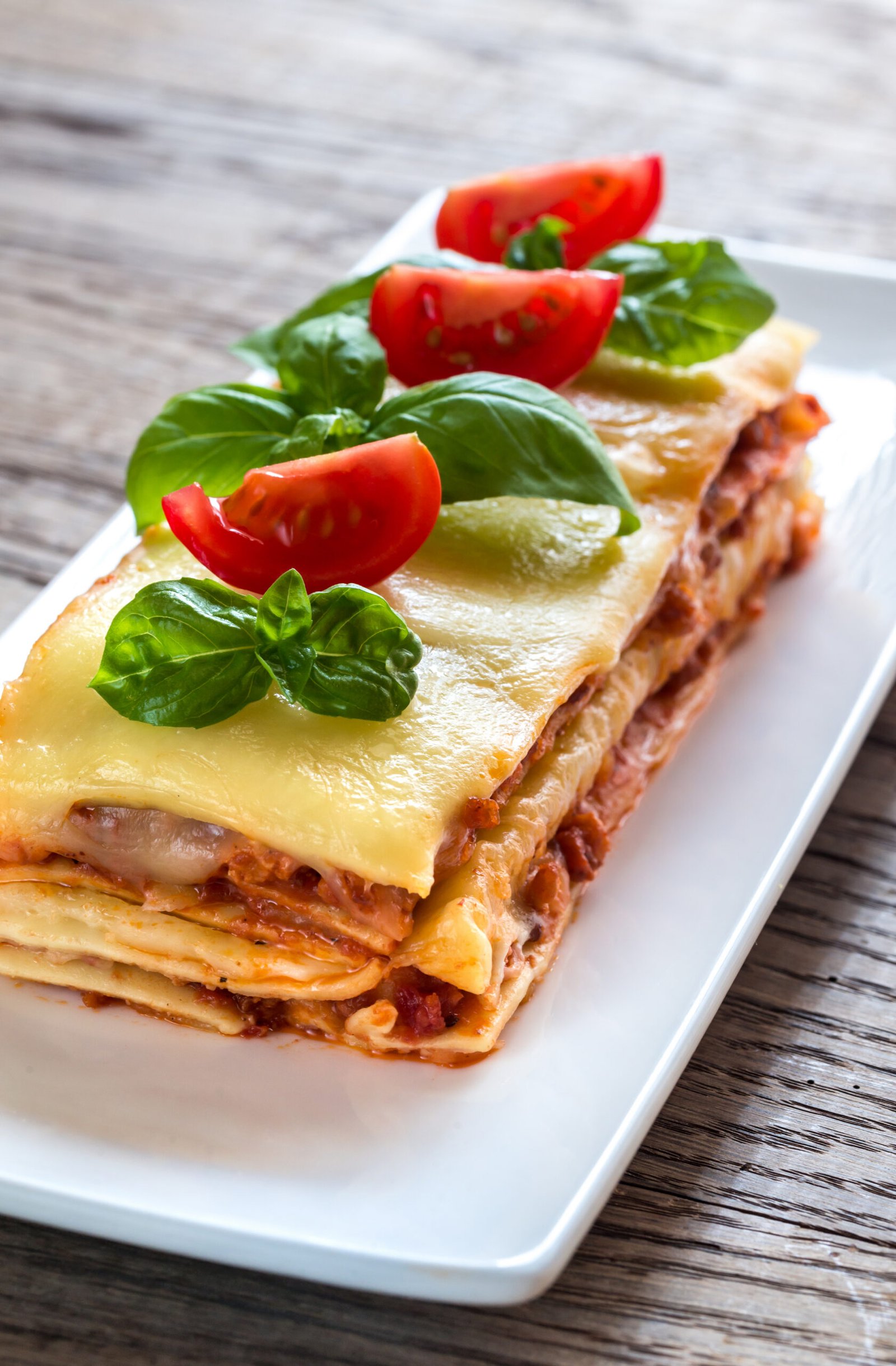Introduction
Ever wondered what happens when you blend the robust flavors of Italian cuisine with the vibrant and diverse tastes of Singaporean dishes? Welcome to the world of fusion cuisine, where culinary boundaries are pushed, and innovation takes center stage.
Fusion cuisine is all about combining elements from different culinary traditions to create something entirely new and exciting.
The Magic of Italian-Singaporean Fusion Cuisine
When it comes to fusing flavors, the combination of Italian and Singaporean cuisines has captured the hearts (and taste buds) of food lovers across the globe. Imagine savoring a dish that marries the rich, creamy textures of Italian pasta with the bold, spicy notes of Singaporean laksa. Sounds intriguing, right?
What makes this fusion so unique is its ability to blend two distinct flavor profiles into harmonious and delightful dishes. The result is a gastronomic adventure that showcases the best of both worlds, creating a dining experience that’s both familiar and novel.
Food aficionados have taken note, with Italian-Singaporean culinary fusion gaining popularity in various restaurants and home kitchens alike. This trend has not only intrigued but also inspired chefs around the world to experiment and innovate.
Curious about how these two culinary giants come together? Keep reading as we dive into the journey of Italian-Singaporean fusion cuisine.
A Tale of Two Culinary Traditions
Italian Cuisine: An Ode to Simplicity and Freshness
Italian cuisine is well-known for its rich history, emphasis on simplicity, use of fresh ingredients, and vibrant flavors. It beautifully captures the essence of Mediterranean cooking with its sun-ripened tomatoes, fragrant basil leaves, and exquisite extra virgin olive oil.
Key Ingredients and Flavors in Italian Cuisine:
- Tomatoes: The cornerstone of many Italian dishes.
- Olive Oil: Liquid gold that enhances the taste of any dish.
- Garlic: Adds depth and aroma.
- Herbs: Basil, oregano, rosemary, and thyme are essential.
- Cheese: Parmigiano-Reggiano, mozzarella, ricotta—the list goes on.
Traditional Cooking Techniques in Italian Cuisine:
- Slow Cooking: Think Bolognese sauce simmered for hours.
- Grilling: Perfect for fish and vegetables.
- Baking: From pizza to focaccia, the oven is a key player.
If you want to dive into an authentic Italian experience, try preparing the delicious Saltimbocca alla Romana, a classic dish hailing from Rome.
Singaporean Cuisine: A Melting Pot of Flavors
On the flip side, Singaporean cuisine is like a gastronomic United Nations. Influenced by Malay, Chinese, Indian, and even Western cuisines, it offers a kaleidoscope of flavors that’s nothing short of spectacular. Imagine the boldness of chili crab mingling with the subtle sweetness of Hainanese chicken rice.
Key Ingredients and Flavors in Singaporean Cuisine:
- Chili: Adds heat to many dishes.
- Soy Sauce: A staple in marinades and sauces.
- Coconut Milk: Gives richness to curries and desserts.
- Seafood: Crabs, prawns, fish—freshness is key.
- Spices: Turmeric, coriander, cumin.
Traditional Cooking Techniques in Singaporean Cuisine:
- Stir-Frying: Quick cooking over high heat preserves flavors.
- Steaming: Ideal for dumplings and fish dishes.
- Grilling: Satay skewers cooked over an open flame are legendary.
Italian cuisine brings simplicity; Singaporean cuisine brings complexity. The fusion of these two creates something both familiar and exotic—a culinary journey that tantalizes the taste buds while paying homage to its roots.
The Fascinating Journey of Italian-Singaporean Fusion Cuisine
How the Fusion Emerged as a Culinary Trend
Blending flavors from Italian and Singaporean cuisines is like orchestrating a symphony where each ingredient plays its unique note. This culinary trend didn’t just pop out of nowhere. Foodies and chefs, driven by curiosity and creativity, began experimenting with cross-cultural ingredients and techniques. Imagine the first person who thought, “What if we took chili crab sauce and drizzled it over spaghetti?” Pure genius.
Culinary fusion often starts in metropolitan melting pots where diverse cultures collide—places like Singapore, known for its rich food heritage, and Italy with its timeless recipes. As these cultures met, chefs began to see the potential for unique flavor combinations that could tickle taste buds in novel ways.
Benefits of Combining Italian and Singaporean Flavors in Fusion Cooking
- Diverse Flavor Palette: The fusion provides an expanded range of flavors—think creamy risotto infused with the zestiness of laksa spices.
- Innovation: Fusion cuisine pushes the boundaries of traditional cooking, encouraging chefs to think outside the pasta box.
- Cultural Appreciation: Blending these cuisines promotes cultural exchange and appreciation through food, making every bite a mini passport stamp.
Challenges of Mixing These Culinary Worlds
- Balancing Flavors: Italian cuisine often focuses on simplicity with a few high-quality ingredients, while Singaporean dishes can be flavor bombs. Finding that perfect harmony can be tricky.
- Ingredient Sourcing: Getting fresh Italian cheese or authentic Singaporean spices might require some globetrotting or at least a well-stocked international market.
- Preserving Authenticity: There’s always a risk that fusion might dilute traditional recipes, leading to dishes that don’t do justice to either cuisine.
But hey, isn’t that part of the adventure? Every challenge brings an opportunity to create something truly special. So next time you find yourself debating between pizza or char kway teow, why not have both? Because when it comes to Italian-Singaporean fusion cuisine, it’s all about blending flavors into something greater than the sum of its parts.
Exploring the Depths: Unique Ingredients and Techniques in Italian-Singaporean Fusion Dishes
Fusion cuisine isn’t just about combining ingredients from different culinary traditions and hoping for the best. It’s an art that requires a deep understanding of flavors, textures, and cooking techniques. Let’s dive into some unique ingredients and innovative techniques that make Italian-Singaporean fusion dishes truly extraordinary.
Unique Ingredients
1. Laksa Leaf Pesto
Laksa leaves (also known as Vietnamese coriander) are a staple in Singaporean cuisine, often used in the beloved laksa soup. When fused with traditional Italian pesto ingredients like basil, pine nuts, and Parmesan cheese, you get a zesty and aromatic Laksa Leaf Pesto.
2. Gula Melaka Tiramisu
Gula Melaka (palm sugar) is a sweetener commonly used in many Singaporean desserts. Swapping out the usual white sugar in tiramisu for Gula Melaka introduces a rich, caramel-like depth that perfectly complements mascarpone cheese.
3. Chilli Crab Pasta
Chilli crab is iconic in Singapore, while pasta is quintessentially Italian. Combining them results in Chilli Crab Pasta, where al dente spaghetti is tossed in a spicy, tangy crab sauce with hints of tomato and fermented bean paste.
Innovative Cooking Techniques
1. Sous Vide Bak Chor Mee
Bak Chor Mee (minced meat noodles) typically involves pork cooked until tender with Chinese black vinegar and soy sauce. By adopting the Italian sous vide technique to cook the pork at precise low temperatures, you achieve a tender texture that melds beautifully with the traditional flavors.
2. Pizza with Sambal Sauce Base
Replacing the classic tomato sauce on pizza with sambal (a spicy chili paste from Southeast Asia) creates a fiery yet savory canvas for toppings like mozzarella, pepperoni, or even seafood. The result is an unforgettable pizza experience that bridges both culinary worlds.
3. Fusion Risotto
Traditional risotto is creamy and rich thanks to slow-cooked Arborio rice. Infusing it with flavors from Hainanese chicken rice (like pandan leaf and ginger) adds an aromatic twist that pays homage to both cuisines.
Blending Culinary Worlds
These unique ingredients and techniques illustrate how Italian-Singaporean fusion dishes bridge two rich culinary traditions. Whether it’s using laksa leaves or experimenting with sambal sauce on pizza, these innovations create harmonious blends of flavors that are both familiar and refreshingly new.
So next time you’re whipping up something special in the kitchen or dining out in search of an adventurous meal, keep an eye out for these fusion marvels that marry the best of Italy and Singapore on one plate.
Where Tradition Meets Innovation: Notable Restaurants and Influencers in the Italian-Singaporean Fusion Scene
Lion Dance Cafe stands as a beacon of creativity in the Italian-Singaporean fusion culinary scene. This unique establishment brings together traditional Teochew Singaporean and Cali Italian family recipes, adding a modern twist that has foodies raving. Imagine biting into a rich, aromatic Teochew-style braised duck pasta or savoring a plate of tantalizing chili crab arancini. These dishes are not just meals; they’re culinary adventures that transport you to both Italy and Singapore with every bite.
Other Restaurants Pushing Boundaries
- PastaMania Singapore: Known for its innovative approach, this restaurant isn’t afraid to mix it up. Picture laksa spaghetti or sambal seafood risotto—dishes that make you go, “Wait, what?” but in the best possible way.
- Cicheti: A cozy spot where wood-fired pizzas meet satay skewers. Their menu is a testament to how well Italian and Singaporean flavors can coexist, creating something entirely new yet comfortingly familiar.
Influential Chefs Leading the Charge
Lauren Monaco is one chef who deserves a spotlight. Her recipes meld Peranakan, Italian American, and Jewish influences into mouthwatering creations that challenge the norms of traditional cuisine. Lauren’s work exemplifies how diverse cultural backgrounds can come together to create something truly special.
“Food is culture, history, and innovation on a plate,” says Lauren Monaco. And she walks the talk by constantly pushing the boundaries of what Italian-Singaporean fusion can be.
The Power of Social Media
The rise of social media has been instrumental in popularizing Italian-Singaporean fusion cuisine. Platforms like Instagram and TikTok are buzzing with influencers showcasing their latest fusion experiments, inspiring others to do the same. Accounts like @fusionfeasts and @italiansingaporeankitchen have amassed followers eager to see what new concoctions they’ll whip up next.
By sharing stunning photos, step-by-step recipe videos, and engaging stories, these influencers play a crucial role in driving the culinary fusion trend forward. They turn kitchens into playgrounds where traditional dishes get reimagined with bold new flavors.
Whether it’s through an Instagram reel or a YouTube tutorial, these digital tastemakers ensure that Italian-Singaporean fusion cuisine continues to evolve and captivate taste buds worldwide.
The Future of Italian-Singaporean Culinary Fusion
Imagine a world where the zest of Singaporean spices dances seamlessly with the comforting embrace of Italian pasta. This is not just an exciting culinary fantasy but a very real possibility and you can be part of it.
Get Cooking!
- Experiment in Your Kitchen: Try blending Italian and Singaporean flavors at home. Think laksa spaghetti, or bak kut teh risotto. Grab your favorite recipes from both cuisines and see how they complement each other.
- Dining Adventures: Seek out restaurants that are creating innovative fusion dishes. Not only will you expand your palate, but you’ll also support chefs who are pushing culinary boundaries.
Endless Possibilities
The fusion of Italian and Singaporean cuisines holds immense potential for innovation and growth. As chefs continue to experiment, the future promises:
- New Flavor Combinations: Expect to see more daring pairings, blending traditional ingredients in novel ways.
- Innovative Techniques: Chefs will likely develop new cooking methods that draw upon both culinary traditions.
Chefs have just scratched the surface of this delightful fusion. Who knows? You might stumble upon the next big thing in Italian-Singaporean cuisine right in your own kitchen! So roll up those sleeves, grab some sambal and parmesan, and let the flavor adventure begin!














































































